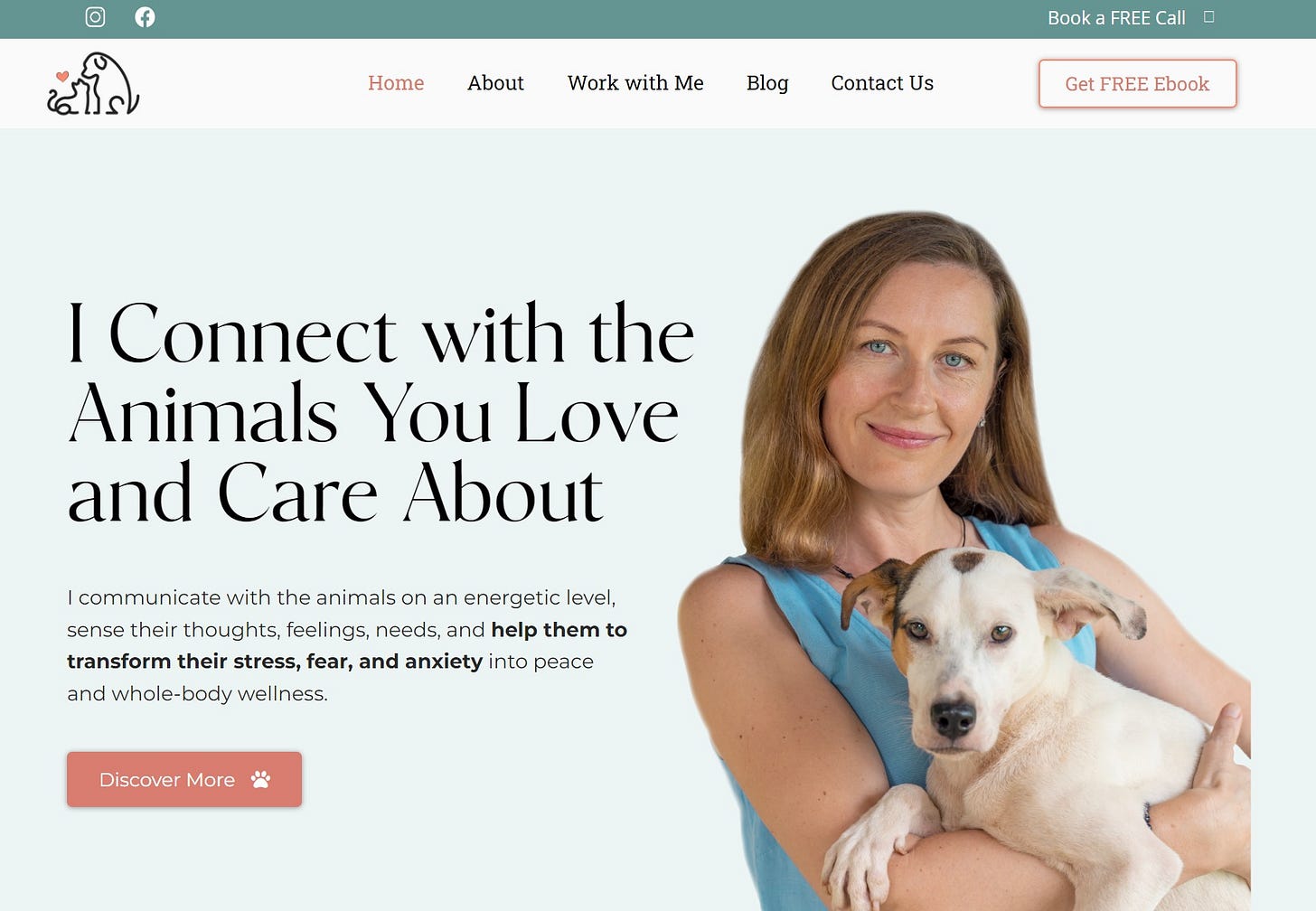Are You Marketing to Everyone? Why That’s Costing You Clients
How Knowing Your Ideal Client Can Transform Your Business
Knowing Your Ideal Client is The Key to Crafting a Powerful Home Page Message
In my work with coaches, solopreneurs, and small business owners, I often encounter a common issue: the disconnect between the business and its potential clients, particularly on the home page of their websites. As we know, the home page is usually the first place new visitors land, whether they’re coming from Google, social media, or other sources. If your message isn’t spot-on, these visitors often leave within a few seconds. But why does this happen?
The Common Pitfall? Marketing to Everyone
Many holistic coaches and small business owners fall into the trap of wanting to help everyone. While this comes from a place of genuine care and a desire to serve, it often leads to a diluted message that fails to connect with anyone.
As the saying goes,
"When you market to everyone, you market to no one."
The crux of the issue is that these businesses haven’t defined their ideal client. Without a clear understanding of who you’re speaking to, it’s impossible to craft a message that resonates. So, let’s dive into why knowing your ideal client is crucial and how you can effectively identify and communicate with them.
The Importance of Knowing Your Ideal Client
In my practice, I've seen firsthand how a well-defined ideal client can transform a business. Understanding your ideal client isn't just a nice-to-have; it's the cornerstone of effective, heart-centered marketing. When you know who you're speaking to, you can create messages that resonate deeply, build trust, and foster genuine connections.
"In the realm of marketing, clarity breeds connection. When you know your audience, you speak their language, touch their hearts, and meet their needs."
1. Targeted Messaging
When you understand your ideal client, you can create messages that speak directly to their needs, desires, and pain points. This targeted approach not only captures their attention but also builds trust.
Example: A life coach specializing in helping corporate employees manage stress needs to tailor their message to address the specific challenges and language of this group, rather than offering generic stress management advice.
"Your message should be a mirror reflecting your client's deepest concerns and aspirations. When they see themselves in your story, trust is built, and engagement follows."
2. Increased Engagement
A well-defined ideal client profile allows you to craft content that is more engaging and relevant. When potential clients feel understood, they are more likely to spend time on your site, explore your offerings, and ultimately, take action. This increased engagement is often the first step in building a lasting client relationship.
Example: Sarah, a wellness coach focusing on mothers, found that by addressing the specific stresses of balancing work and family, her engagement rates skyrocketed. Her content spoke directly to the struggles and hopes of busy moms, making her a valuable resource.
3. Efficient Marketing
Knowing your ideal client helps streamline your marketing efforts. Instead of spreading your resources thin trying to appeal to everyone, you can focus on platforms, messages, and strategies that are most likely to attract your target audience. This leads to better ROI and a more sustainable business model.
Example: When I worked with a business coach named Emily, we identified her ideal clients as mid-career professionals looking for a career change. By focusing her marketing on LinkedIn and professional development platforms, Emily was able to reach her target audience more effectively and saw a significant increase in qualified leads.
Steps to Identify Your Ideal Client
Reflect on Your Current Clients
Start by looking at your existing clients. Who do you enjoy working with the most? Who sees the best results from your services? These clients are often a good indicator of your ideal client. Make a list of their common characteristics, such as age, profession, challenges, and goals.
Define Demographics and Psychographics
Demographics include age, gender, income level, education, and marital status. Psychographics delve deeper into your clients' lifestyles, values, interests, and attitudes. Understanding both aspects gives you a comprehensive view of who your ideal client is.
Example: Take Sarah, a wellness coach who focuses on helping mothers manage stress and find balance. Her ideal client demographic might be women aged 30-45, married with children, middle to upper-middle class, and college-educated. Psychographically, these women value family, wellness, and personal growth, and are looking for ways to incorporate self-care into their busy lives.
Identify Pain Points and Desires
What problems are your clients facing that your services can solve? What are their dreams and aspirations? Understanding these pain points and desires allows you to create a compelling message that addresses their needs and positions you as the solution.
Example: For Sarah, the wellness coach, her clients’ pain points include feeling overwhelmed by their responsibilities, lacking time for self-care, and experiencing chronic stress. Their desires are to feel more balanced, have more energy, and be more present with their families.
Conduct Surveys and Interviews
If possible, survey your existing clients or conduct interviews. Ask them about their biggest challenges, what they value most in your services, and why they chose you over competitors. This firsthand information is invaluable for refining your ideal client profile.
Example: When I worked with a business coach, we conducted surveys to understand what her clients valued most. We found that her clients appreciated her personalized approach and the practical tools she provided for achieving their business goals. This feedback helped us refine her messaging to highlight these strengths.
Create a Client Persona
Combine all the information you’ve gathered to create a detailed client persona. This persona should be a fictional yet realistic representation of your ideal client, complete with a name, background, and specific needs. Use this persona to guide all your marketing efforts.
Example: Meet Emily, a 35-year-old marketing manager. Emily works at a fast-paced tech company and is responsible for a team of ten people. She’s married with two kids, ages 6 and 9, and values her family time deeply. However, she struggles with balancing her demanding career and her responsibilities at home. Emily often feels overwhelmed and burnt out, leading to sleepless nights and constant stress.
Despite her busy schedule, Emily is committed to personal growth and self-improvement. She regularly reads books on productivity and mindfulness but finds it challenging to apply these principles consistently in her chaotic life. She feels guilty about not spending enough quality time with her kids and worries about not being present enough for them.
Emily's main pain points are managing stress, finding a balance between work and home life, and feeling constantly exhausted. Her desires include achieving a sense of calm and control, having more energy, and being more present with her family. She often experiences cognitive dissonance, feeling torn between her professional ambitions and her personal life commitments.
Emily’s persona helps Sarah, the wellness coach, tailor her marketing messages to address these specific needs and challenges. Sarah focuses on offering practical, easy-to-implement strategies for stress management, work-life balance, and mindfulness practices that fit into Emily’s busy schedule. By understanding Emily's struggles and aspirations, Sarah can create content and programs that resonate deeply with her ideal client, ultimately building a stronger connection and more effective engagement.
"Creating a client persona isn't about limiting your reach; it's about deepening your impact. When you know your client intimately, every piece of content becomes a conversation, not a monologue."
Connecting Authentically with Your Audience
Understanding your ideal client is the cornerstone of an effective home page and overall marketing strategy. By speaking directly to their needs, using their language, and providing clear, compelling solutions, you can transform your home page into a powerful tool for connection and conversion.
In our next article, we'll dive deeper into how to design an ideal home page that captures your ideal client's attention and keeps them engaged. Stay tuned as we continue to explore essential strategies for holistic coaches and entrepreneurs aiming to grow their businesses authentically and effectively.






